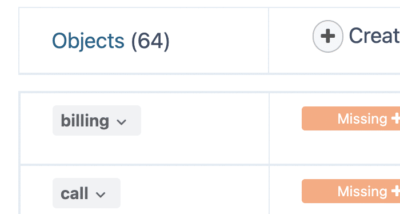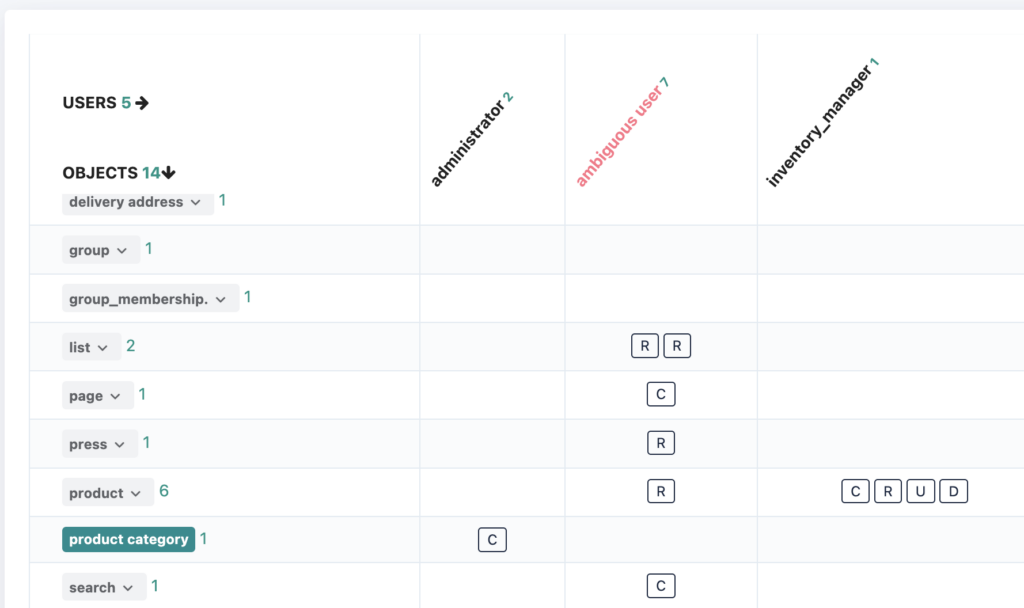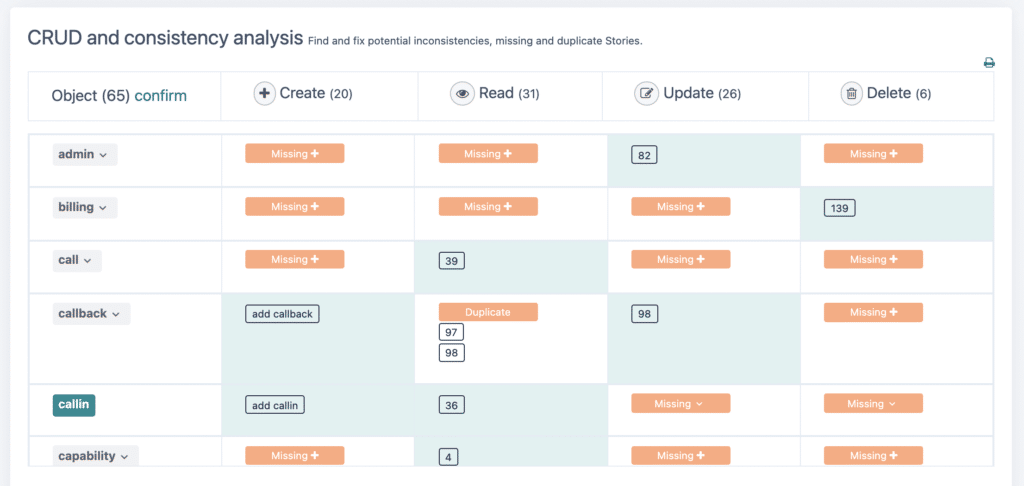What is a CRUD Matrix?
A CRUD matrix is the result of CRUD analysis, which is a technique for mapping data change events across a set of requirements.
To maintain data in a system, you need at least one of each CRUD events (Create, Read, Update & Delete)
Typically, data maintained within a software application needs to have at least one function for each that creates, reads, updates and deletes each type of data. We call this the full set of CRUD operations. To check for completeness of a set of requirements for a system we need to examine all of the functional requirements within a set and ensure that there is at least one create function, one read function and so on for each object type. CRUD analysis is the activity of cross -referencing all the four data maintenance types for each object types that have been found across a set of requirements. Until now, this has been a manual task of examining each requirement and laboriously drawing up the CRUD matrix or CRUD table.
CRUD Analysis, Automated
With ScopeMaster, CRUD Analysis is fully automated.
ScopeMaster analyses the text of your functional user stories (or software requirements). It detects the most likely data movements for each object type within each requirement.
It finds all the objects mentioned in all the requirements (that have clear functional intent) and then maps them onto a single table so that the requirements author can instantly see any potential missing functional requirements.
This is how ScopeMaster speeds up completeness checking to find potential omitted functionality and potential duplicate checking too. CRUD analysis is an important, but often overlooked step in ensuring that requirements are complete, consistent and not duplicated. Using this feature of ScopeMaster you can find and fix omissions in about 2 minutes. This represents a saving of 50x productivity increase on the manual work of establishing and maintaining a CRUD table, detecting and adding the missing requirements.
Let ScopeMaster maintain your CRUD matrix – automatically.

NEW – Automated CRUD analysis by user:

ScopeMaster now presents two versions of the CRUD analysis, by object-operation and by user-operation for each object. The latter helps you understand who has permission to access what data. This insight will help you avoid rework and get a better understanding of scope. And it’s all fully automated.
CRUD Matrix, Automated
Imagine a CRUD matrix for a set of 1000 user stories – maintained dynamically.
To do this manually would be a very time consuming job. Now, ScopeMaster will dynamically maintain this CRUD matrix for you. CRUD analysis is important on nearly all data-rich software systems. It is valuable for four main reasons:
- ensure completeness
- ensure consistency (of object type naming)
- check for potential duplications
- ensure traceability of functional events to stated requirements
Some data maintenance functionality are often overlooked as requirements if the CRUD analysis is not performed early. Projects that do not perform this analysis are characterised by subsequent project scope creep as these essential functions are later “discovered.”
Early CRUD analysis is a great way to contain scope creep.

ScopeMaster automatically detects the CRUD operations (and suggested data movements) across all user stories and can assemble the complete CRUD matrix for a set of requirements.

ScopeMaster crud matrix is designed to make it easy for you to locate and resolve potential duplicate or missing requirements. It also ensures traceability of CRUD operations.

ScopeMaster maintains a quality score of your entire set of requirements based largely on CRUD adherence.
The Benefits
The three main benefits of compiling a CRUD matrix is to identify potential defects in your requirements. The main types of defect you can expose are:
Omissions – missing CRUD events.
Duplications – excessive operations on an object type occurring in many requirements.
Consistency – detecting consistent naming of object types.
Permissions – who is doing what with each object type
